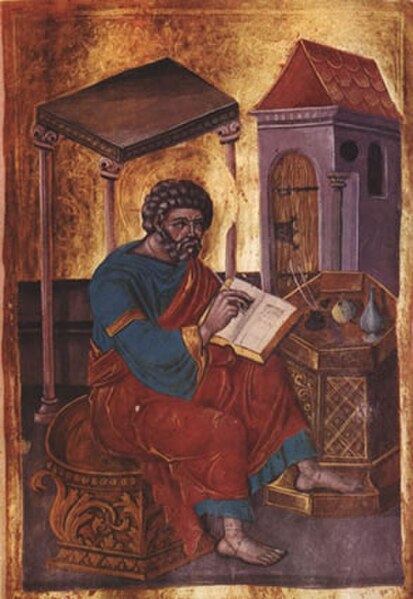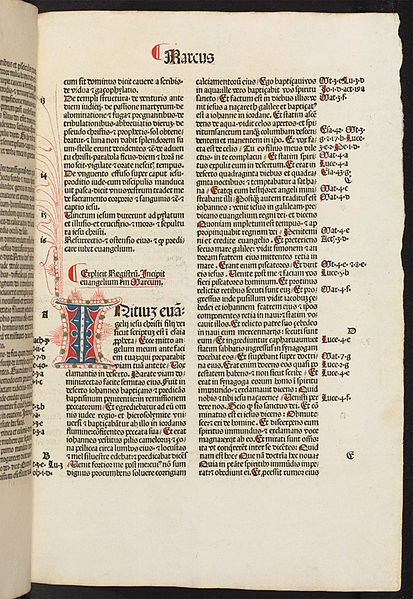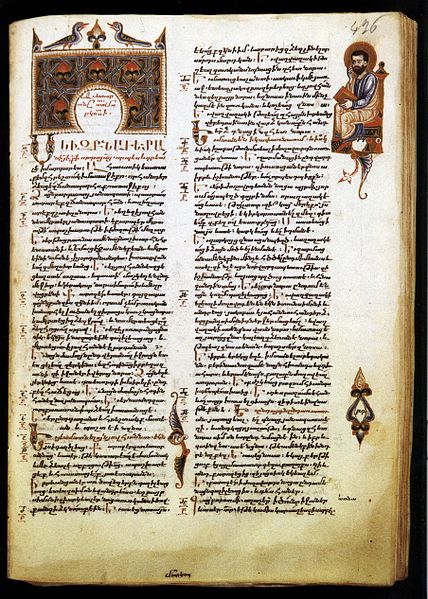Mark 12 is the twelfth chapter of the Gospel of Mark in the New Testament of the Christian Bible. It continues Jesus' teaching in the Temple in Jerusalem, and contains the parable of the Wicked Husbandmen, Jesus' argument with the Pharisees and Herodians over paying taxes to Caesar, and the debate with the Sadducees about the nature of people who will be resurrected at the end of time. It also contains Jesus' greatest commandment, his discussion of the messiah's relationship to King David, condemnation of the teachers of the law, and his praise of a poor widow's offering.
The Latin text of Mark 11:10–14:32 in Codex Gigas (13th century)
Christus Pantokrator, apsis of the cathedral of Cefalù
Gustave Doré: David slaying Goliath
The Gospel of Mark is the second of the four canonical gospels and one of the three synoptic Gospels. It tells of the ministry of Jesus from his baptism by John the Baptist to his death, the burial of his body, and the discovery of his empty tomb. It portrays Jesus as a teacher, an exorcist, a healer, and a miracle worker, though it does not mention a miraculous birth or divine pre-existence. He refers to himself as the Son of Man. He is called the Son of God but keeps his messianic nature secret; even his disciples fail to understand him. All this is in keeping with the Christian interpretation of prophecy, which is believed to foretell the fate of the messiah as suffering servant.
Andrea Mantegna's St. Mark, 1448
Mark the Evangelist, 16th-century Russian icon
Page from Mark in a Latin Bible dated 1486 (Bodleian Library, Oxford)
First page of the Gospel of Mark: "The beginning of the gospel of Jesus Christ, the Son of God", by Sargis Pitsak (14th century)







